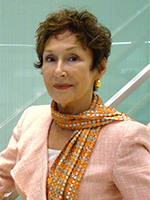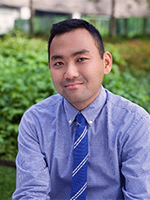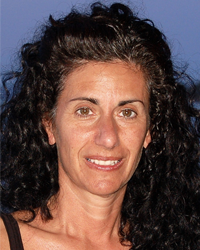Fighting ageism will be one of the great public-health battles of the next decades. I didn’t see that clearly enough until spring 2020, the start of the COVID Era of accelerated ageism. I have to confess I had written several anti-ageist books without confronting systemic ageism in the healthcare system.
Now, everyone with fresh knowledge of UnitedHealth and other greedy corporations, or Project 2025’s aim to drastically cut Social Security, Medicare and Medicaid, understands that healthcare for all older adults is threatened as never before.
For me, research and writing started as a spontaneous passionate protest against medical ageism. As soon as the World Health Organization called the coronavirus a “pandemic” on March 11, 2020, I was shocked by the likelihood that in the United States, older adults with COVID would be explicitly denied access to ICU ventilators.
I had to learn what “triage” meant: a way to deselect some, among the very sickest patients in hospitals, when there is a scarcity of doctors or supplies The University of Pittsburgh guidelines, a model for many states, do not mince words: The tiebreaker for access to ventilators is age. The guidelines give priority to younger patients within age groups: 12 to 40, 41 to 60, 61 to 75, an older than 75. (“Gut-wrenching,” the Boston Globe called the news in one headline.) If there were enough very sick younger adults, the likeliest outcome would be that no one older than 60, or 40, would get access to a ventilator.
A list of “factors that have no bearing,” which starts with “race, disability,” and includes “perceived social worth, perceived quality of life,” omits age. Guideline writers were thus legally forbidden to deploy such biases, but the age exclusion made that attempt incoherent. The Massachusetts guidelines say “disabilities” cannot lead to exclusion, but then it puts people older than 65, many of course with impairments, in the two lowest priority groups.
‘The ethical principle is that old people have equal claims to life as anyone else.’
“Age” has become another suspect criterion to people in the disability, poverty, anti-ageism, and civil rights movements. We have what the poet John Okrent, remembering Walt Whitman nursing wounded soldiers in the Civil War in his sonnet sequence, That Costly Season, calls “democratic nostrils.” Dr. Michelle Holmes, a Harvard epidemiologist, pointed out that “schemes using point scales to penalize older Americans and prioritizing those in better prior physical condition automatically would put marginalized groups ... at a huge disadvantage.” We keep in mind the nearly 50% of Americans, many of them people of color or working-class, who acquire chronic illnesses and disabilities at younger ages.
What the guidelines revealed was appalling: Unashamed, undisguised medical discrimination was signed by apparently honorable, even distinguished physicians.
I was sheltering at home safely at that time, a healthy woman in my late 70s. My husband and I were totally protected. Imaginatively, however, I suppose I put myself in the ICU, coughing, breathing hoarsely, with my pulse oximeter showing I might crash and that I needed to get put quickly on the best apparatus they had. The threat of scarcity—of being denied a second chance at living—dreadful as it is, can have ironic advantages: it creates empathy, urgency, vehemence. It sharpens one’s principles.
The ethical principle is that old people have equal claims to life as anyone else. That principle was subject to the counter-argument that the young should count more. Arthur L. Caplan, founding head of the Division of Medical Ethics at NYU’s Grossman School of Medicine, rebutted, “It seems to me that we want to guide our decisions about access to healthcare not by biases about being too old or treatments being too expensive, but first and foremost, we want to ask whether there is benefit. Does it work? Is it going to help the individual?”
The critique I wrote, quoting the guidelines, Caplan, and other ethicists, was “Ageist ‘Triage’ Is a Crime Against Humanity.” The Los Angeles Review of Books published it on March 21, 2020. That was the first impetus for my recently published book, American Eldercide (University of Chicago Press, 2024).
One result is that the Assistant District Attorney of Middlesex County, Antonia Soares Thompson, invited me recently to address her monthly Anti-Hate Anti-Bias Task Force meeting. Soares Thompson had recognized that some kinds of ageism could be considered hate crimes. Every district attorney in the country needs such an enlightened Task Force. Americans need such a broad understanding of which groups can be marginalized and thus put at extreme risk, including the danger of dying. The guidelines survive, to be pulled out in any future situation of scarcity.
Cultural critics and historians of healthcare know that “scarcity” is constructed. In at least 10 government reports from 2003 to 2015, federal officials predicted a shortage of ventilators, masks and other supplies if faced by a large-scale infectious disease outbreak. Administration after administration had not adequately replenished the stockpile.
Potential Future of Ageism Under the New Administration
My first concern, that March, was for any and all older adults who might become victims of lethal ageism. Then the catastrophic premature deaths from COVID focused my angst on the 1.34 million people in nursing facilities. The book became a crime thriller, a whodunit. Why did they not get enough support from those responsible for them: the Centers for Medicare & Medicaid Services (CMS), the states’ departments of public health, and the facility owners and operators? Trump plainly revealed his own ageism and disability bias at a time when close to 200,000 Americans had already died. At a rally in Ohio, he asserted that the coronavirus only “affects elderly people, elderly people with heart problems and other problems. ... But it affects virtually nobody. It’s an amazing thing.”
So, one intellectual and literary task, in writing in detail about the first Trump administration’s abandonment of nursing-facility residents, was to integrate that devastating public-health failure with other surges of ageism in the new COVID Era.
Now, Trump’s next administration promises to mismanage public health yet again—trying to put Mehmet Oz at the head of CMS at the same time that the future president wants to slit all the safety nets and have Elon Musk and Vivek Ramaswamy head a commission to tell him how.
The current era of “Aging America” and the “aging globe” may become an atrocity-producing situation for older persons. “Too many, too costly” summarizes the estranged political attitude. Will anxiety over income inequality, which already runs high and has divided the population, or a suddenly created fear of trillions in deficit spending, or disdain for “the Boomers” become focused on the figure of an old person who is seen as expendable?
This amoral outcome depends on how discourse about potential victims is structured by government and the media. But much depends also on how firmly the guardians of later life—really, that should be all of us, the temporarily young and the nonyoung—resist.
Some of this essay is excerpted from Morganroth Gullette’s book American Eldercide: How It Happened, How to Prevent It, which came out in October 2024.
Margaret Morganroth Gullette, PhD, is one of the nation’s leading voices on the negative impacts and violence of ageism. Gullette is a scholar at the Women’s Studies Research Center of Brandeis University.
Photo caption: Margaret Morganroth Gullette
Photo credit: Yto Barrada









